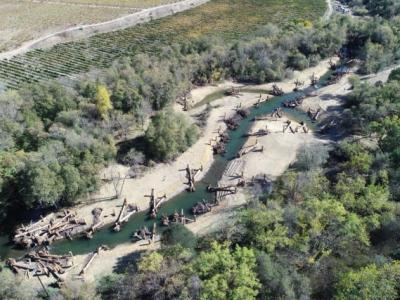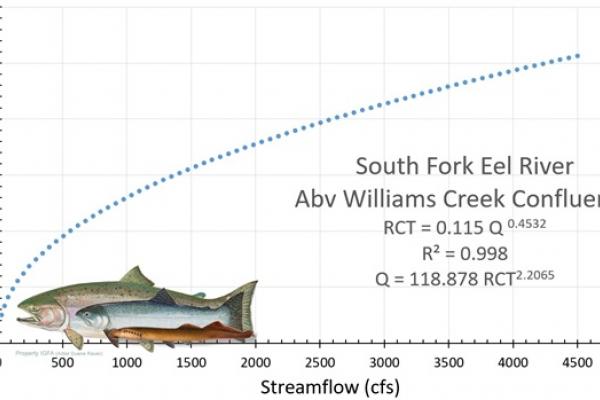Assessing Ecological Risks from Streamflow Diversions by Applying Riffle Crest Thalweg Rating Curves
Workshop Coordinators:
Emily Cooper, HSU River Institute
William Trush, HSU River Institute
By restricting streamflow diversions to a relatively small percentage change in ambient riffle crest thalweg (RCT) depth, the natural magnitude, duration, frequency, and timing of unregulated streamflows (Q) remain protected. Workshop participants will be shown how to quantitatively link basic concepts in stream hydraulics to stream ecosystem processes, then apply these concepts to practically assess ecological risks from cumulative streamflow diversion during a hydrograph recession. The morning session will review field techniques for measuring riffle crests, show how basic stream channel hydraulics can be estimated from RCT-Q rating curves, then calibrate an RCT-Q rating curve from the realtime USGS gaging website. Real spatial and real temporal variability will then be folded-into this hydraulic RCT framework to demonstrate how stream ecosystem complexity can be quantified at a top-down scale. The afternoon session will synthesize the morning’s RCT-Q rating curve analytical/ecological attributes, followed by a step-by-step risk analysis of spawning success of the WY2018 Pacific lamprey run in the South Fork Eel River (bring laptops, or at least a calculator). As time permits, additional instream and riparian ecological processes will be risk-assessed. The final hour will be reserved for discussing top-down versus bottom-up strategies for instream flow diversion policies in California.


